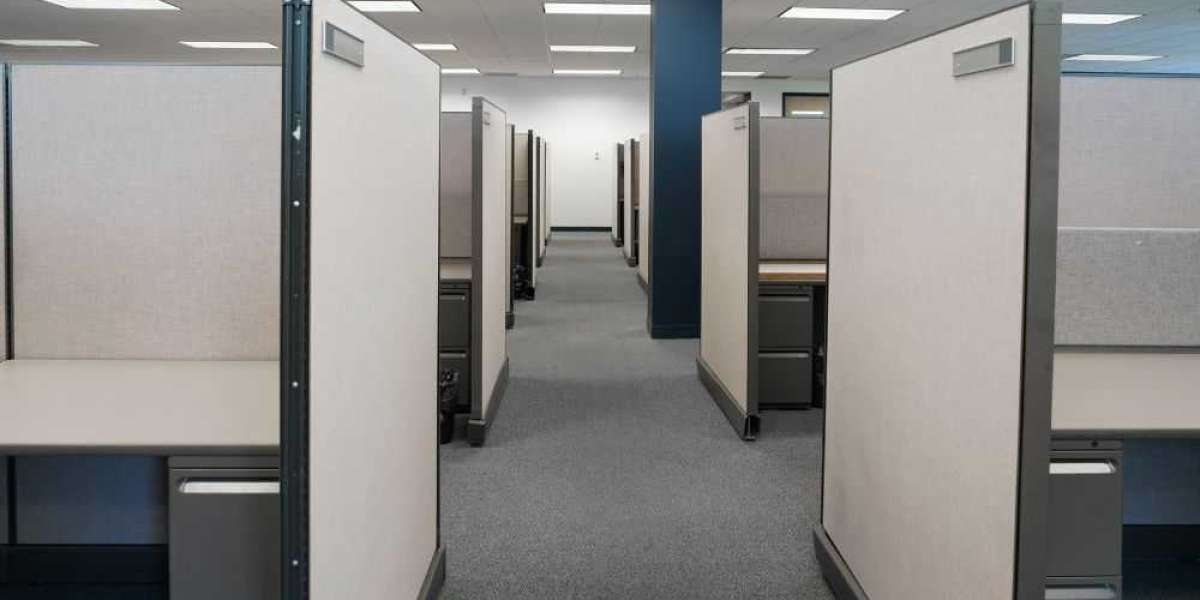The way offices are designed speaks volumes about a company’s culture and values. Among the many elements that define an office layout, cubicle design plays a pivotal role in shaping the work environment. A well-designed cubicle not only enhances productivity but also fosters a sense of belonging, collaboration, and innovation among employees.
The Link Between Workspace and Culture
Workplace culture is influenced by physical spaces as much as it is by company policies. A thoughtfully crafted cubicle design sets the tone for how employees interact, collaborate, and feel within the workplace. When spaces are open, ergonomic, and tailored to specific tasks, they communicate a message of care and efficiency, directly impacting employee morale. Conversely, outdated or cramped cubicles can create an environment of stagnation and discomfort.
Key Elements of Cubicle Design That Impact Culture
1. Collaborative Layouts for Teamwork
Modern cubicle designs prioritize collaboration without compromising personal workspace. Open layouts with semi-private cubicles foster teamwork by allowing employees to communicate freely while retaining focus. Shared spaces and breakout zones integrated into cubicle layouts further encourage brainstorming and problem-solving.
2. Ergonomics for Comfort and Productivity
Ergonomic designs have become non-negotiable in today’s office spaces. Features like height-adjustable desks, supportive chairs, and anti-fatigue mats ensure employee comfort, reducing physical strain and enhancing productivity. A comfortable workspace shows employees that their well-being is a priority, cultivating a positive culture.
3. Personalization to Boost Ownership
Allowing employees to personalize their workspaces creates a sense of ownership and attachment to the company. Features like movable shelves, pinboards, and adjustable lighting options enable workers to create a space that feels uniquely theirs. Personalized cubicle design promotes creativity and satisfaction, directly influencing employee engagement.
4. Integration of Technology
A tech-friendly cubicle is essential in modern offices. Features like built-in charging stations, cable organizers, and smart desks enhance convenience and productivity. Tech integration signals a company’s forward-thinking approach, appealing to tech-savvy employees and creating a culture of innovation.
5. Aesthetic Appeal and Brand Alignment
The visual aspect of cubicle design reflects a company’s brand and values. Whether it’s clean, minimalist lines or vibrant, energetic colors, the design should resonate with the company’s identity. A well-designed workspace not only motivates employees but also impresses clients and visitors, reinforcing the brand’s image.
6. Noise Control for Focused Work
Noise can be a significant distraction in the workplace. Modern cubicle designs incorporate acoustic panels, sound-absorbing materials, and strategic layouts to minimize noise pollution. Quiet work environments foster focus, improving the quality and efficiency of output.
Benefits of Modern Cubicle Design
Enhanced Productivity: Comfortable, distraction-free workspaces allow employees to perform at their best.
Improved Collaboration: Open layouts encourage teamwork, while semi-private spaces maintain individual focus.
Better Health and Well-Being: Ergonomic furniture and biophilic elements promote physical and mental health.
Positive First Impressions: Stylish, branded cubicle designs leave a lasting impact on visitors and clients.
Reduced Turnover: A pleasant, employee-centric workspace reduces job dissatisfaction and boosts retention.
How to Implement Innovative Cubicle Design
Analyze Workplace Needs: Assess your employees’ daily tasks, collaboration patterns, and preferences before choosing a design.
Incorporate Modular Furniture: Use adaptable furniture to reconfigure spaces as organizational needs evolve.
Focus on Sustainability: Opt for eco-friendly materials like bamboo, recycled metals, and low-VOC fabrics to create green workspaces.
Leverage Natural Elements: Incorporate plants, natural textures, and sunlight to improve air quality and reduce stress.
Consult Design Experts: Partner with professional workspace designers to create layouts that balance aesthetics, functionality, and culture.
Conclusion
Modern cubicle design is much more than arranging desks and dividers. It’s a strategic tool that shapes workplace culture, boosts productivity, and reflects a company’s values. Investing in innovative, employee-focused designs is not just about aesthetics; it’s about creating a work environment where people thrive, collaborate, and contribute to the success of the organization. By prioritizing ergonomic comfort, collaborative spaces, and personalized elements, businesses can foster a vibrant, productive, and loyal workforce.











